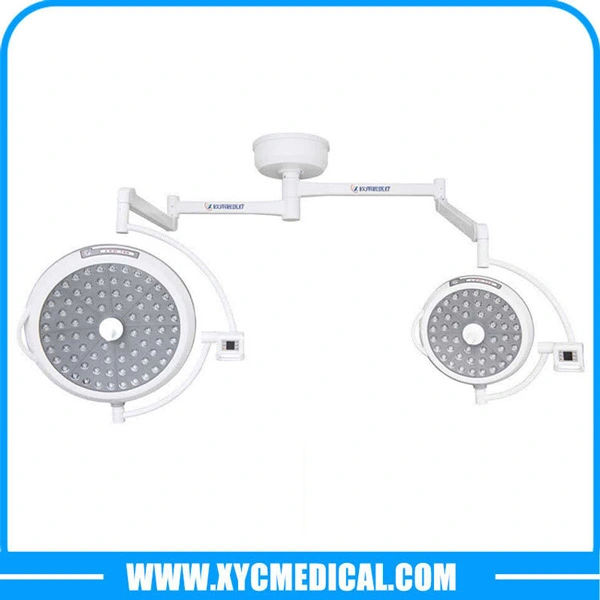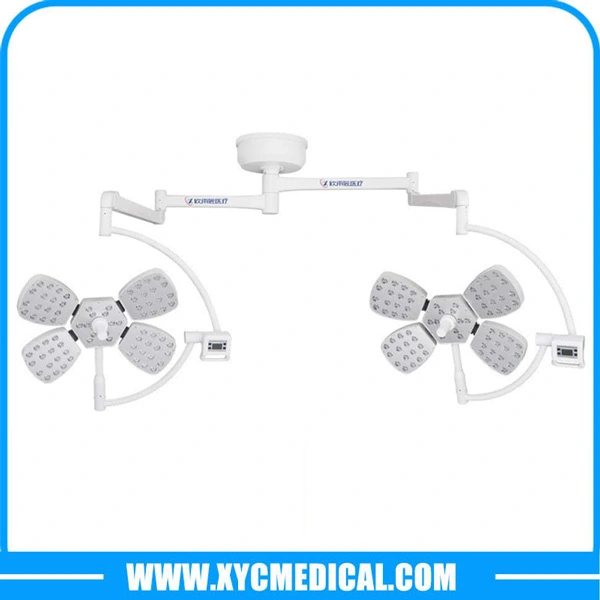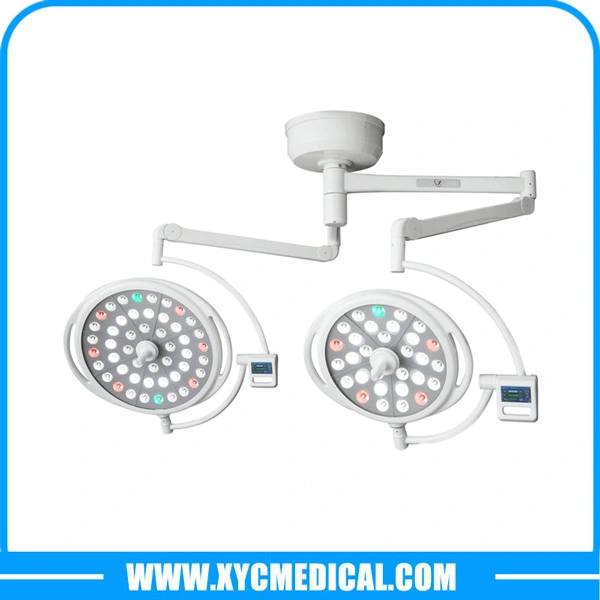OT Light Working Principle - Function and Usage of Operation Theatre Light (OT)
Ever heard of OT light? OT lights, also known as surgical light, are lamps that illuminate the surgical site, to get the best view of small, low-contrast objects at different depths in the incision and body cavity. This kind of medical device is an indispensable medical tool in the course of operation, as a practitioner in the medical field needs to understand all kinds of medical devices, including the OT light, what is the principle of the operation theatre light? Here is a detailed introduction to the function, origin, and usage of celling surgical light, let's take a look.
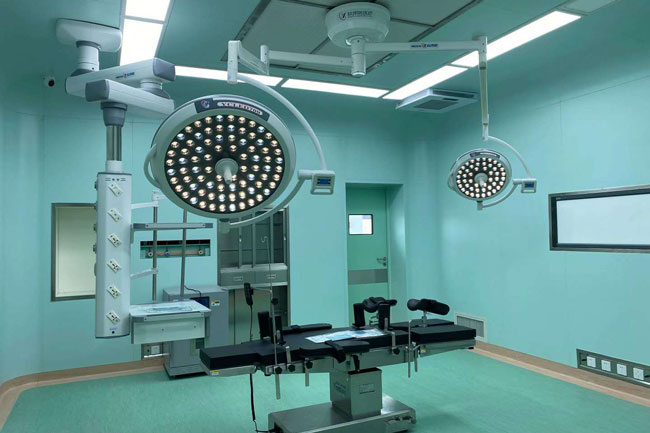
Working principle of OT light
If you put a cylindrical tea tube on the table and light a candle next to it, the tube will cast a clear shadow. If you light two candles next to a tea cone, will create two overlapping but not coincident shadows. the overlapping part which no light shot at all is completely black, this is the umbra; The palace only one candle can shine next to this shadow, is half-light and half-dark penumbra. If you light three or even four candles, the shadow part will gradually shrink and many layers will appear in the penumbra part.
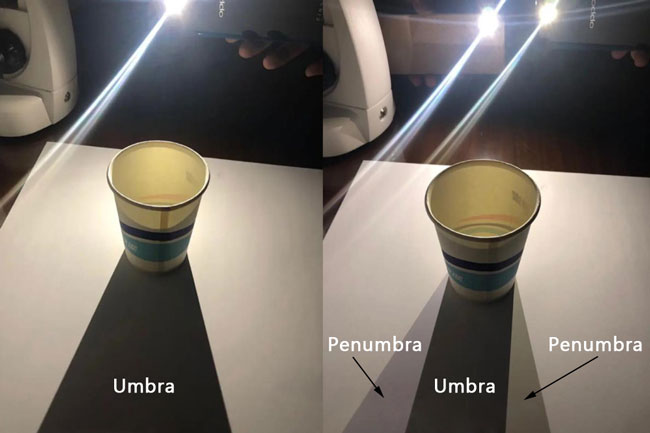
Objects in the electric light can generate a shadow consisting of umbra and penumbra, is also the same reason. Obviously, the larger the luminescent object, the smaller the umbra. If we light a circle of candles around the tea cone, the umbra will disappear completely, and the penumbra will be too light to see.
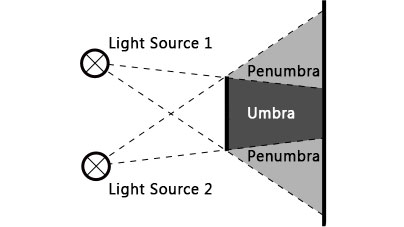
Based on these principles, the scientists created OT light for surgery. It arranges high-intensity lights in a circle on the lamp panel to create a large source of light. In this way, light can be shone at different angles to the operating table, ensuring it is bright enough without creating a noticeable umbra, hence the name shadowless OT light.
Function of OT light
The full name of the OT light is operation theatre light. As the name implies, OT light is most commonly used in hospitals, where it is used as a lighting tool during surgery, color distortion can be minimized, as light that does not create shadows does not cause visual errors for the operator, allowing the operation to proceed normally.
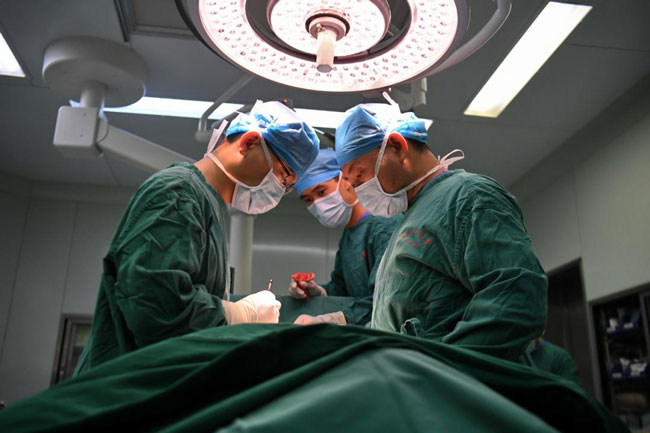
Application Method
1. Wash hands
2. Wipe the OT light with a damp towel (try not to use chlorine disinfectant solution)
3. Check that the suspension arms and connector of OT light are flexible and drift free
4. Depending on the type of surgery, point the OT light at the surgical area
5. Check the illumination adjustment switch of the OT light and adjust it to minimum brightness
6. Turn on the power switch and check that the OT light is in good condition
7. Turn off the OT light
8. Surgery starts, turn on the power switch of the OT light
9. Gently move the OT light according to the area of surgery and point it at the surgical field
10. Adjust the brightness of the light to suit the requirements of the surgery and the doctor
11. Observe during surgery and adjust lighting according to the need of operation
12. After surgery, turn the illumination adjustment switch to minimum brightness
13. Turn off the power switch of the OT light (and then the touch screen switch)
14. Wet wipe to clean the shadowless lamp after finishing
15. Remove the OT light from the laminar flow vent or place it vertically, to avoid obstructing laminar flow ventilation ventilation
16. Wash hands and register usage records
Origin of OT light
Edison's mother was sick and needed surgery, but there was no light, edison figured out a way, take out all the mirrors in the house, form a circle in the operating room and light a candle in the middle, so there's enough light and no shadows.
History of OT light
In the 1920s, French professor Weyland invented the world's first OT light for surgery in England. Whelan placed a 100-watt bulb at the center of the refractive lens, which was formed by many narrow plate glasses placed evenly on the dome of the operating lamp, so the whole OT light is like a cone that eliminates the spire.
The second reform of operation theatre light is France's single dome type celling OT light and the United States track type surgical OT light in the 30's and 40's. At the time, the light source was an incandescent bulb that could only reach a maximum of 200 watts. The area around the filaments was too large to control the path of light, making it difficult to focus. Reflector is copper polishing molding and is not reflective, so the illumination of the shadowless ot light is extremely low.
By the 1950s, in order to improve the illumination of the hospital ot light, the hole-type multi-lamp operation light was produced and used in Europe and Japan one after another. It increases the number of light sources and uses small reflector made of high purity aluminum to improve the lighting performance of the ot light in hospitals.
However, due to the increase in the number of light bulbs, this type ot light can cause rapid temperature rise, predisposing doctors to discomfort and dry tissue at the site of surgery, which is detrimental to the patient's post-operative recovery.
In the early 1980s, Japan start producing cold light hole type surgical shadowless lamp using halogen light source. In the late 1980s and early 1990s, overall reflection halogen ot light come out, using computer-aided design (CAD) techniques to create the reflector surface, which is formed by industrial stamping at a time, formed multilateral reflectors, this surgical light source is not only as bright as daylight, but also has a good shadow-free effect.
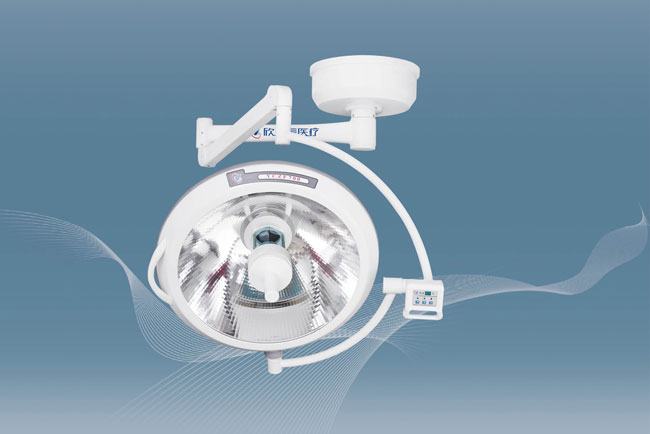
As we enter the 21st century, the details of the operation theatre light continue to be refined, besides the basic performance parameters such as illumination, shadowless effect, color temperature and color rendering index are improved, there are also strict requirements for uniformity of illumination. With the application of LED light sources in the medical industry, new opportunities have also been presented for the development of surgical OT light. In recent years, LED OT light are slowly dominating the market, with features such as excellent cooling effect, good light quality, unlimited brightness regulation, uniform lighting, no screen flash, long life, energy saving and environmental protection.
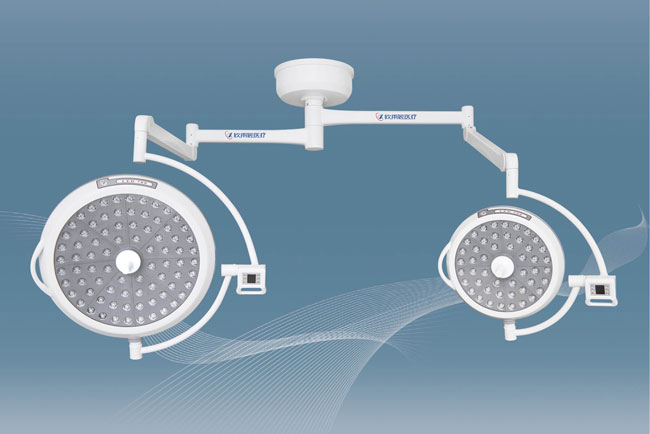
Common malfunctions and solutions of surgical OT light
1. The lights aren't on
Open the top cover to check if the fuse has blown and the supply voltage is normal. If both are normal, seek professional repair.
2. Transformer damage
Generally there are two causes of transformer damage, supply voltage problems and oversized currents caused by short circuit, the latter reason should ask professionals to repair.
3.Fuses often break
Check that the bulb in use is configured in accordance with the rated power specified in the specification. If the fuse is configured too much to exceed its rated current, the fuse will fail. Check the voltage of the power supply is normal.
4. Disinfecting handle deformation
The disinfecting handle of the lamp can be disinfected by autoclaving (Please refer to the manual for details), but be careful not to crush the handle with a heavy object when disinfecting, otherwise the handle will deform.
5. Turn the angle of the operation theatre light, the lamp does not light
this is mainly due to the sensors at both ends of the surgical lamp arm, which can experience poor contact after a period of use, in this case, you should get someone professional to do the maintenance and repair.
6. OT light shift
For larger surgical OT lamp, after a certain period of use, due to the weight of the lamp head, it requires a large frictional force to locate, so there will be a shift, which can be resolved by tightening the positioning screw at top to increase friction.
7. Main light is not on, secondary light is on(for halogen OT light)
Halogen series operating lamp circuit control has automatic switching function. When the main light is damaged, the secondary light should be turned on to ensure proper operation. When the operation is over, the main lamp bulb should be switched immediately.
8. Dimmed brightness(for hole type OT light)
The reflective glass bowl of the cold light hole type OT light is using coating technology. The general coating technology can only guarantee two years of service life, coating layer after two years will be reflective darkening, blistering and other problems. So, when that happens, you need to replace the reflective bowl.
9. Emergency power(for OT light with battery)
Emergency lights for surgery maintenance, whether used or not, must make sure the battery is charged once every 3 months, otherwise the battery will be damaged.
Article From: Shandong Xinyuchen Medical Equipment Co., Ltd.





